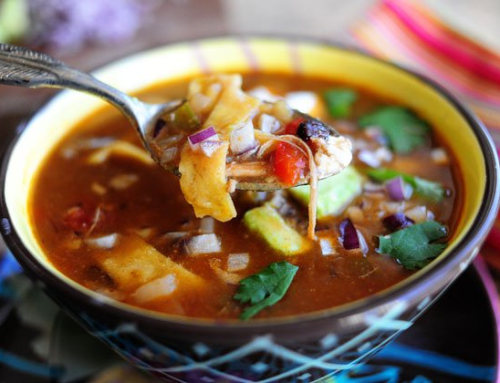1. Be cheap
Eating healthy can be more expensive, but it doesn’t have to be. Use canned beans, brown rice, cheaper cuts of meat you can leave in the crockpot, etc.
In today’s economy, it is important that we know how to feed our family on a dime. One of my favorites is a recipe from my cookbook entitled “Pork Chalupas”. You simply add an inexpensive cut of pork trimmed of all visible fat, dried beans, canned tomatoes with green chilies and you come home to an amazing dinner that can be served over rice. Take time to learn cooking and seasoning techniques that can take ho-hum meals to a whole new level.
2. Be prepared
Have the items you need to prepare 3 or 4 healthy, quick-to-fix meals on hand. Being prepared to eat healthy is half the battle!
Often the biggest challenge to eating healthy is having the items you need available. My clients always assume that I only want them to eat fresh fruits and vegetables, but that is not true. I want them to eat more fruits and vegetables PERIOD and the best way to ensure that will happen is for them to buy fresh, frozen, canned in own juice or water, and dried. By having a wide variety of options, you are prepared for those unexpected times when it has been too long since your last grocery visit.
3. Simplify
Healthy meals don’t have to be elaborate. Most people prefer something easy to eat.
Often after a long day at work or school, we are hungry for something that is easy to eat. Think roast in the crockpot with potatoes and carrots. It’s easy, it’s inexpensive and it’s comfort food – it feeds your soul!
4. Take shortcuts
There are so many convenience items in grocery stores today – use them!
We often think healthy cooking has to be complicated. This could not be further from the truth – especially if we utilize all the amazing short-cuts supermarkets provide for us today. Look for pre-bagged fresh veggies, steamable veggies in the frozen section, and brown rice in microwavable cups ready in 1 minute! Buy rotisserie chicken to use in recipes calling for cooked chicken. Use canned beans in soups and salads. Buy pre-cut fruit at the fruit bar, it is more expensive, but there may be times where the convenience is worth it.
5. Create a list of favs!
Try some new recipes and then create a repertoire of the ones your family loves. Repeat them often – you and your family will look forward to their favorites.
Learning a new recipe can be challenging the first time, but once you’ve tried it, it gets easier and easier every time. Plus, you can put your very own touch on it – making it just the way your family loves it! There is nothing better than knowing you have a collection of recipes you feel comfortable preparing and serving.





Leave A Comment